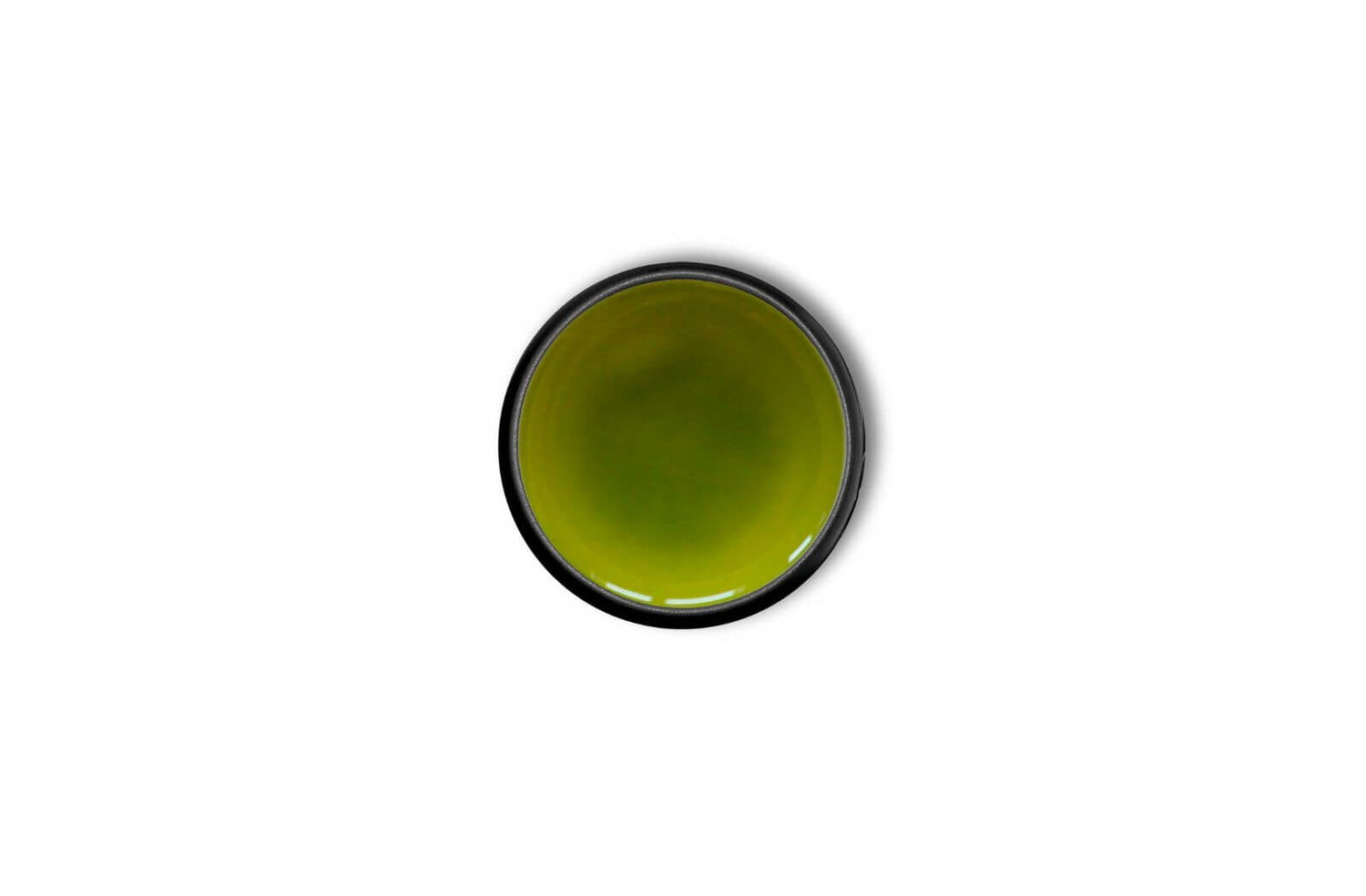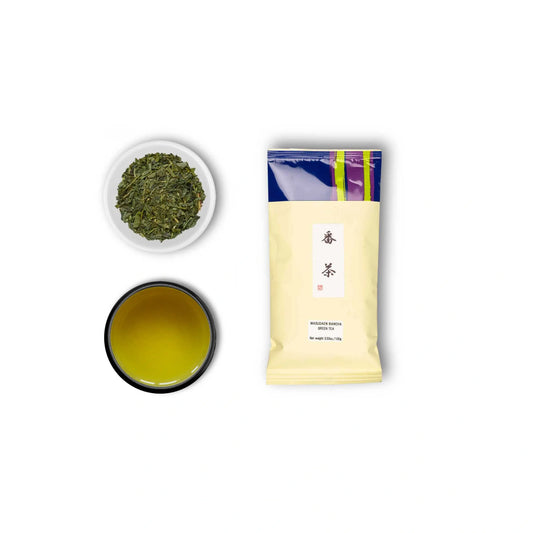-
Fukamushi Sencha Kagoshima Murasaki
Precio habitual A partir de €23,00Precio habitualPrecio unitario por€40,00Precio de oferta A partir de €23,00Oferta -
Sencha Shizuoka Yamaga no Sato
Precio habitual A partir de €30,00Precio habitualPrecio unitario por€36,00Precio de oferta A partir de €30,00Oferta -
 Oferta
OfertaHenta Sencha Saemidori
Precio habitual A partir de €18,00Precio habitualPrecio unitario por€34,00Precio de oferta A partir de €18,00Oferta -
 Oferta
OfertaHenta Sencha Asanoka
Precio habitual A partir de €9,99Precio habitualPrecio unitario por€29,00Precio de oferta A partir de €9,99Oferta -
 Oferta
OfertaSencha Kasugaen Asatsuyu
Precio habitual A partir de €23,00Precio habitualPrecio unitario por€35,00Precio de oferta A partir de €23,00Oferta -
 Oferta
OfertaSencha Té Verde Okumidori
Precio habitual A partir de €18,00Precio habitualPrecio unitario por€34,00Precio de oferta A partir de €18,00Oferta -
 Oferta
OfertaShincha Yakushima Yabukita
Precio habitual €19,99Precio habitualPrecio unitario por€29,00Precio de oferta €19,99Oferta -
 Oferta
OfertaSencha Té Henta Kirishima
Precio habitual A partir de €17,00Precio habitualPrecio unitario por€33,00Precio de oferta A partir de €17,00Oferta -
Dorado Sencha Yabukita Kasugaen
Precio habitual A partir de €39,00Precio habitualPrecio unitario por€49,00Precio de oferta A partir de €39,00Oferta -
 Oferta
OfertaUji Sencha Chanoka
Precio habitual A partir de €29,00Precio habitualPrecio unitario por€47,00Precio de oferta A partir de €29,00Oferta -
Shincha Tanegashima Kuritawase
Precio habitual €36,00Precio habitualPrecio unitario por€49,00Precio de oferta €36,00Oferta -
 Oferta
OfertaMontaña Chanoka Sencha
Precio habitual A partir de €32,00Precio habitualPrecio unitario por€47,00Precio de oferta A partir de €32,00Oferta -
 Oferta
OfertaSencha Zenkouen Superior
Precio habitual A partir de €27,00Precio habitualPrecio unitario por€49,00Precio de oferta A partir de €27,00Oferta -
Isagawa Sencha Té De Hojas Sueltas
Precio habitual A partir de €24,00Precio habitualPrecio unitario por€40,00Precio de oferta A partir de €24,00Agotado
qué es Sencha ¿té?
Sencha El té es el tipo de té verde más común en Japón, elaborado con hojas de té cocidas al vapor, enrolladas y secadas. Aunque parezca una definición simple,, Sencha El té verde es una de las categorías más diversas, ya que abarca una amplia gama de técnicas de cultivo, sombreado y vaporización. Si desea aprender más sobre el té japonés... Sencha Té verde, puedes leer este artículo aquí

Nuestro Sencha El té proviene exclusivamente de productores de té japoneses de buena reputación.
Trabajamos con decenas de agricultores talentosos que producen té de calidad excepcional. Tras reunirnos con ellos y degustar sus tés en persona, hemos seleccionado algunos que consideramos excepcionales. Estos son los tés que elegimos para compartir con personas de todo el mundo.
Nuestro Sencha El té es 100% orgánico y libre de pesticidas.
Orgánico Sencha Es importante esforzarse por cultivar té verde. Después de visitar plantaciones de té por todo Japón, tuvimos la oportunidad de comparar los campos de té orgánico con los campos de té no orgánico. Descubrimos que los campos de té que usaban pesticidas y productos químicos no creaban un ecosistema saludable para la vida vegetal y animal. Los campos de té orgánico tenían mucha más biodiversidad, con insectos, aves e incluso mamíferos prosperando entre las plantas de té. Al cambiar a orgánico Sencha Con el té verde, no solo estás tomando una mejor decisión, sino que también contribuyes a crear una industria del té más sostenible. En Nio, creemos que los campos de té no solo deben producir un té excelente, sino también convertirse en un hábitat para otras plantas y animales.

Historia de Sencha
En el Japón medieval, la forma más común de consumir té verde era en polvo. Lo que puede considerarse una forma temprana de matcha, se popularizó gracias a su uso en la ceremonia japonesa del té. A principios del siglo XVIII, se comenzó a buscar una forma más sencilla de preparar el té, sin todas las reglas y principios.
Un agricultor de té llamado Nagatani Soen desarrolló un té que podía prepararse de forma más sencilla. Descubrió que al cocer al vapor las hojas y luego enrollarlas en agujas apretadas, se podía conservar el sabor hasta que el té estuviera listo para infusionarlo en agua caliente. Esto significa que solo se necesitan las hojas en una tetera y luego filtrarlas al verterlas. Fue aquí donde Sencha té nació.
Perfil de sabor del japonés Sencha té verde
Es difícil describir el perfil de sabor de Sencha El té, debido a su amplia gama de sabores. En los tés verdes más dulces, se perciben notas de frutas tropicales, maíz dulce y verduras al vapor. En los más secos... Sencha s, notarás más de estos perfiles de sabor cítrico, con notas de paja y hierba de finales de verano.
Proceso de cosecha de Sencha
Sencha Proceso de sombreado del té
Otra forma de categorizar Sencha El té se cultiva a base de sombra. Si un agricultor desea producir un té más dulce, cubre las plantas con una especie de malla antes de la cosecha para bloquear el sol. Normalmente, la planta de té convierte la teanina en catequinas al exponerse a la luz solar, pero al estar a la sombra, retiene más teanina, con sus propiedades dulces y sabrosas, y minimiza las catequinas, más amargas.
Sencha Métodos de cocción al vapor del té
Además de decidir durante cuánto tiempo se debe sombrear el té, los productores de té japonés... Sencha tienen un as más bajo la manga y es el proceso de cocción al vapor. Si bien todos los japoneses... Sencha El té verde se cuece al vapor después de la cosecha y los distintos tés se cuece al vapor durante distintos tiempos, lo que produce resultados sorprendentemente diferentes.

¿Qué necesitas preparar? Sencha ¿té verde?
A diferencia del matcha, Sencha El té verde solo requiere una tetera: la tetera kyusu. Esta tetera es la mejor herramienta para preparar té verde japonés, ya que ofrece una base amplia para que las hojas se desplieguen y un filtro incorporado para filtrarlas al verter.
La tetera kyusu también tiene un asa lateral hueca para facilitar el vertido. Sencha Té. Solo necesitas un rápido giro de muñeca para servir el té, y el asa lateral hueca mantiene la tetera fría al tacto para que no te quemes las manos.
Mira nuestro video completo Sencha Guía completa para preparar té
Beneficios de Sencha té
Hay algunos beneficios diferentes de Sencha Té, y vamos a cubrir algunos de ellos aquí.:
contenido de cafeína: Sencha El té puede considerarse un té con cafeína media. Su contenido de cafeína no es tan alto en comparación con otros tés fuertes como Gyokuro y matcha, pero es significativamente más alto que los tés bajos en cafeína como Hojicha , kukicha, bancha y Genmaicha . Con una taza de Sencha , Puedes consumir entre 40 y 60 mg de cafeína, que es aproximadamente la mitad de la cantidad que consumes en una taza pequeña de café. Esto te dará suficiente energía para pasar la mañana, pero no tanta como para ponerte nervioso o ansioso durante el día.
EGCG en Sencha té: Además de la cafeína y la teanina, Sencha También contiene una gran cantidad de EGCG o galato de epigalocatequina, el principal antioxidante del té verde. Esto es más frecuente en las variedades sin sombrear. Sencha Tés, y se extrae a temperaturas más altas. Si quieres aprovechar al máximo los antioxidantes de tu té, puedes prepararlo con agua hirviendo, ¡pero esto resultará muy amargo!
Preguntas frecuentes
¿Necesitas ayuda? Te tenemos cubierto…
Entrega
Actualmente ofrecemos entrega gratuita Opciones para todos en todo el mundo. Para ciertos pedidos, también ofrecemos envío exprés gratuito, que suele llegar en un par de días. Si tu pedido es urgente, asegúrate de seleccionar una de las opciones de envío más rápidas al finalizar la compra.
Tés y vajilla
¿Tienes preguntas sobre nuestros productos? Puedes preguntar a nuestro equipo de atención al cliente o consultar los cientos de videos que tenemos en YouTube, Instagram, Facebook y TikTok para más información.
Problemas de pedidos
Aunque los envíos suelen realizarse de forma rápida y eficiente desde nuestros centros de distribución en la UE y EE. UU., pueden producirse retrasos debido a las aduanas, el tráfico durante las festividades y el clima. Te proporcionaremos información de seguimiento al realizar tu pedido para que sepas dónde está tu té en todo momento.
Pagos
Actualmente aceptamos pagos con las principales tarjetas de crédito, PayPal, Apple Pay y transferencia bancaria. Si tiene alguna pregunta sobre su método de pago preferido, contáctenos y encontraremos la solución ideal.
Devoluciones y reembolsos
Aunque las devoluciones son muy poco frecuentes en Nio, ocasionalmente ocurren. Queremos que todos estén satisfechos con el té que reciben, por lo que preferimos ofrecer un té de reemplazo en lugar de dejar a alguien con uno que no le guste. Por favor, contáctenos y podremos resolver cualquier problema que pueda tener con el té que pidió.



















